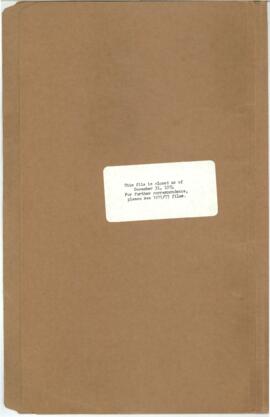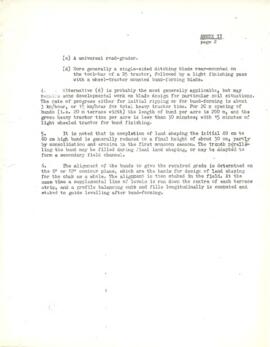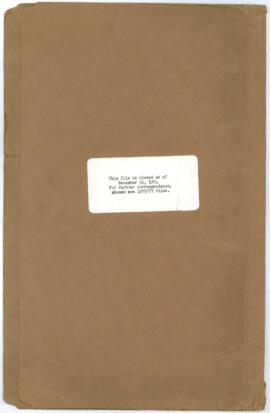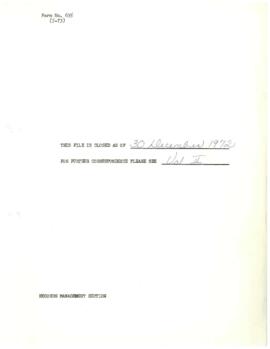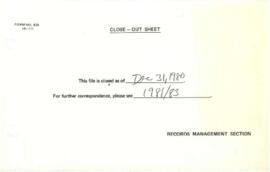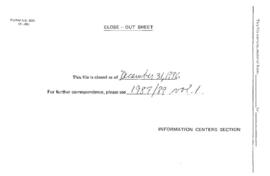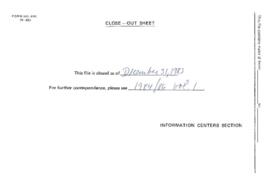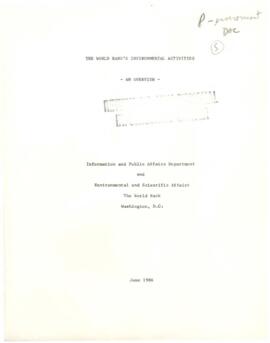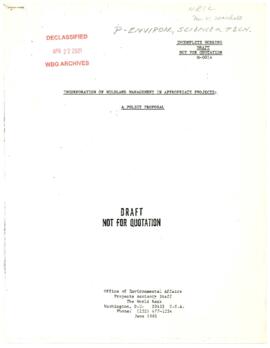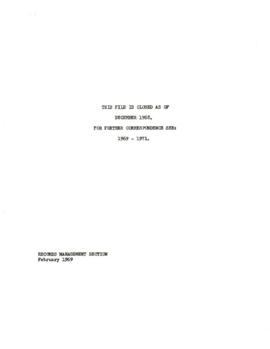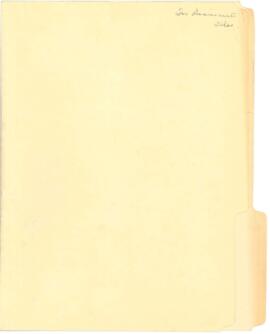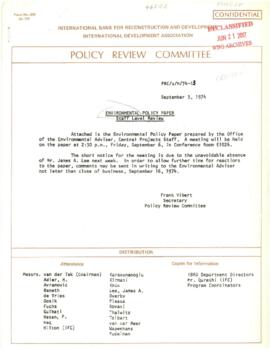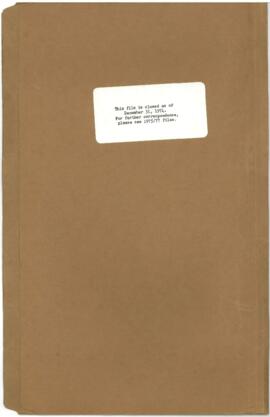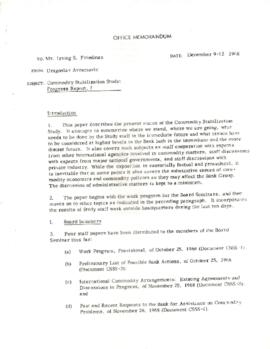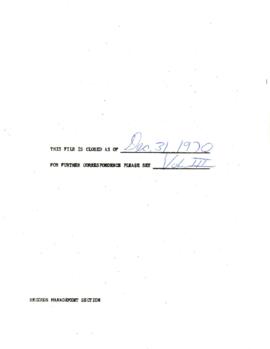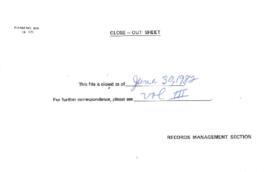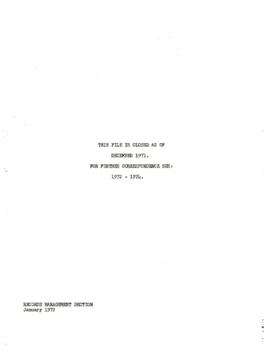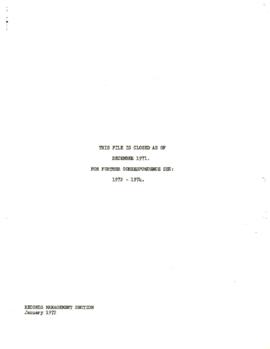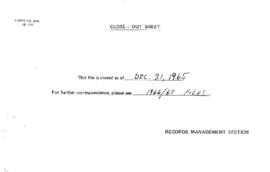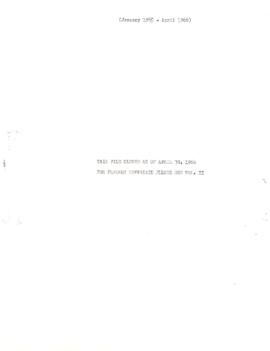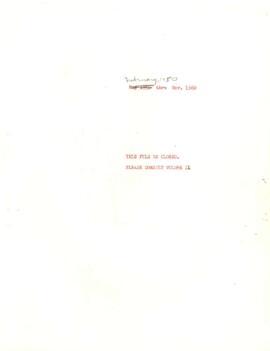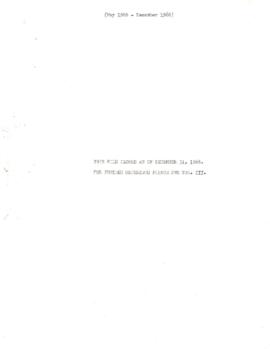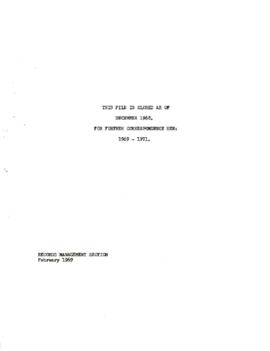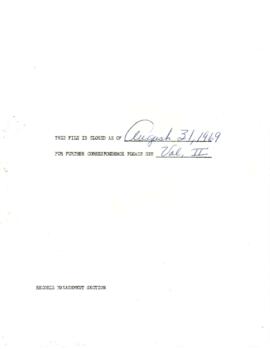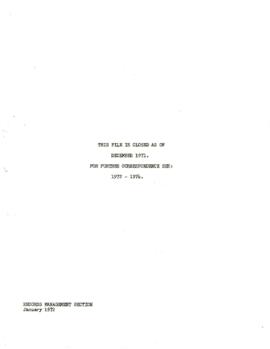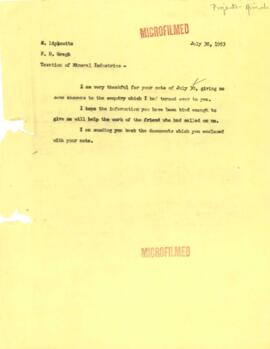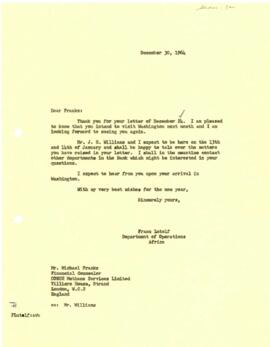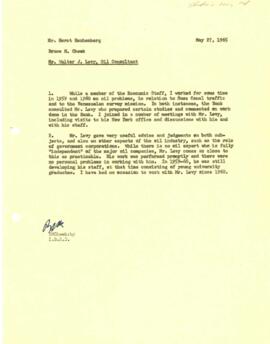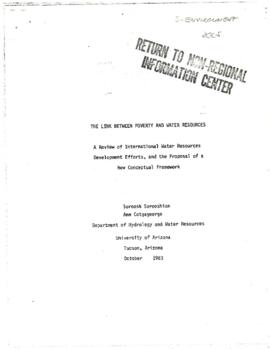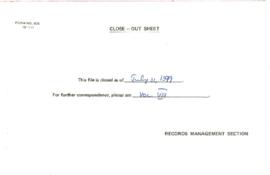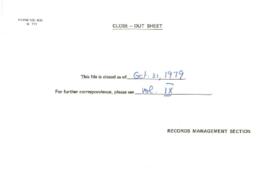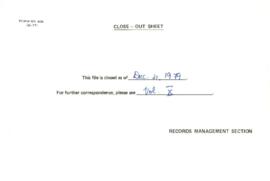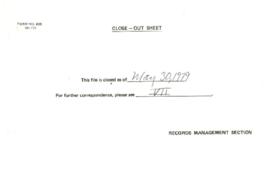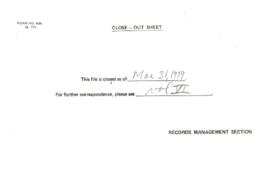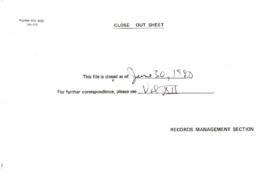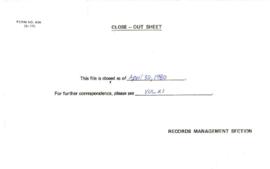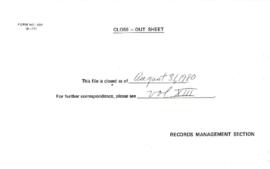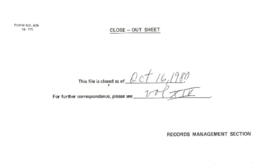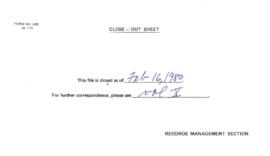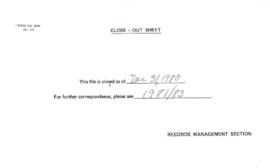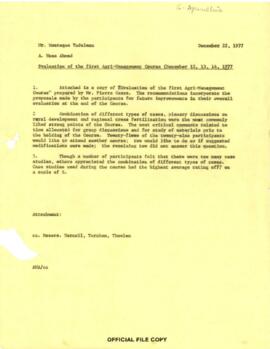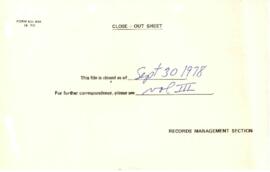Identity area
Reference code
Title
Date(s)
- 1937, 1942, 1944 - 1987 (Creation)
Level of description
Fonds
Extent and medium
595.48 linear feet of textual records; 3 photographs (b&w)
Context area
Name of creator
Biographical history
The International Bank for Reconstruction and Development (IBRD) established a centralized files system on September 30, 1946 with the issuance of Administrative Order No. 3, "Organization of the Communications and Records Services". Initially reporting to the Bank Vice President, the Communications and Records unit was responsible for opening and routing all incoming written official wire, mail, and other communications, dispatching all outgoing written official communications, and maintaining the centralfiles location of official correspondence created by Bank departments and offices.
According to the 1947 Administration Manual, "each office and department will forward Bank records received or created by it, as soon as they cease to be working papers" to the General Files. Initially only the Secretary's Department, Treasurer, Loan, Research, and Legal Departments were authorized to maintain their own files outside of the General Files. Executive Directors' minutes, agenda, and similar documents were also excluded from the centralized files, except those distributed by the Secretary for filing.
Beginning in 1948 through the next decade, file collections from Loan, Economics (formerly Research), Legal, and Technical Operations Departments as well as the Economic Development Institute were incorporated into the Central Files. As the Bank grew to include the International Finance Corporation (IFC) in 1956 and International Development Association (IDA) in 1960, the Central Files included records of those entities as well.
The centralized files were organized according to a Bank-wide classification system and files were traditionally divided into four groups: general files (or non-regional files); operational files (country-specific or regional files) generated mostly by the Loan and Economic Departments; membership, bond and finance files; and official documents mostly legal in nature including loan agreements.
The Communications and Records unit succeeded by the Central Files Section (ADMCF), theGeneral Files Section (ADMGF) and the Records Management Section (later under the Information Solutions Department) were responsible for classifying and maintaining official files from 1946 to 1987. In practice however, official files were incomplete and fragmentary, as departments often kept their own files for convenience or did not forward official correspondence to Central Files once it was no longer required for business.
By the 1960s the maintenance of a central filing system had become progressively cumbersome as the growth of Bank Group operations had resulted in an increasingly large volume of files. As a result, decentralization of some department files began occurring in 1960 with the Legal Department. By late 1967, other departments considered to be specialized including Treasurer, Economic Development Institute, and the Personnel Division of the Administration Department were also authorized to keep their own files.
The physical relocation of Central Files from the Bank's main complex tothe tenth floor of the G Street building in May 1970 also led to the sharp decrease in the use of Central Files and an increase of duplicate sets of working files in the divisions and departments throughout the Bank. In response to this problem, Central File Stations were created and located in close physical proximity to their primary users, although the files remained under the administrative control of the Records Management Section. The IFC Files Station was the first to become a satellite file stationin June 1971 followed by the Bank Administration and Policy (BAP) Central Files Stations (1972 - 1974). These were renamed BAP Central Records Stations (1975 - 1977) and then the Non-Regional Information Centers (NRIC, 1978 - 1987). From 1972 to 1987 these satellite records stations served Administration, Operations Policy, Economic Research and External Relations Vice Presidencies, among other non-regional departments.
As a result of the Bank's July 1987 reorganization of the records management function, Non-Regional Information Centers were closed and recordkeeping responsibilities were turned over to the records-creating offices.
Repository
Archival history
A records center was opened on Bank premises in August 1969. To increase space for active records, inactive files older than 1966 that were part of Central Files were subsequently transferred to the new records center. Between 1980 when a formal Archives program and repository were established, and 1987 with the termination of the Non-Regional Information Centers (NIRCs), the records managed by Central Files were transferred to the Archives in several segments.
Immediate source of acquisition or transfer
Content and structure area
Scope and content
The fonds contains the records maintained as part of the World Bank Group's centralized files variously known as General Files (1946 - 1968), Central Files (1969 - 1971), the semi-centralized Bank Administration and Policy Records Stations (BAP, 1972 - 1974), Bank General Records Station and Administration and Policy Records Stations (BAPRS, 1975 - 1977) and Non-Regional Information Centers (NRIC, 1978 - 1987) with exceptions as described in the Arrangement field below. Records of the administrative unitsresponsible for the management of the General Files records center and its subsequent iterations are not included in this fonds except so far as these records were filed in Central Files. The date range of the Central Files is primarily from 1946 to 1986, however there are a small number of externally produced records dating from 1937 and the early 1940s as well as a single file dating 1987. The remainder of the 1987 files were likely handed over to the functional departments after the closure of the NRICin July 1987.
The departments whose records were centralized over time and represented most prominently in Central Files include (but are not limited to): Economics, Development Services, Technical Operations, Projects (and its sector divisions), and Administration.
Correspondence contained in the fonds includes letters, memoranda, cables, and other related records sent to and from the above departments and the Office of the President during the presidencies of Meyer, McCloy, Black and Woods. President records are otherwise nonexistent in the case of Meyer and are sparse for Woods, McCloy and Black in the Office of the President fonds. The Central Files also contains correspondence of the first Bank Vice Presidents which are fragmentary in the General Vice Presidents and Managing Directors fonds.
Records in this fonds document significant events and studies, administrative and organizational changes, governing bodies and committees, membership and obligations of countries, financial transactions, and the Bank's administrative and operating policies and processes including lending, projects, and development policy. The fonds comprises the general (non-regional) files on all topics not specific to a region or country as well as the membership, bond, and finance files relating to IBRD, IDA and IFC.
The general filing practice for correspondence between two offices within the Bank whose records were filed in Central Files was to save the copy of the document retained by the creating unit (often a yellow carbon copy) and to destroy the copy sent to the receiving unit, unless the receiving unit had annotated the document, in which case both copies were saved.
Appraisal, destruction and scheduling
While the General Files did not have separate body of archival files in which those records deemed to be historically significant were maintained, the General Files Section did carry out a comprehensive program of weeding and destruction of the centralized files starting in the early 1960s. With the implementation of the first records retention schedules by 1970, routine files were destroyed in accordance with these schedules.
Accruals
Accruals are not expected.
System of arrangement
Some parts of Central Files have been arranged according to function in other fonds. Those "series" of records that relate to a specific function or unit were arranged in those functional department fonds rather than maintained in Central Files when there was a clear distinction. These include records arranged into: Office of the Chief Economist; Financial Policy, Planning and Budgeting; External Relations; World Bank Institute (formerly Economic Development Institute); and Consultative Group on International Agricultural Research fonds. See the related units of description field at each series level for more information.
Conditions of access and use area
Conditions governing access
Records are subject to the World Bank Access to Information Policy. Records relating to the International Finance Corporation are subject to the IFC Access to Information Policy.
Conditions governing reproduction
Records are subject to the Copyright Policy of the World Bank Group. Records relating to the International Finance Corporation are subject to the Copyright Policy of IFC.
Language of material
- Arabic
- Dutch
- English
- French
- German
- Portuguese
- Spanish
Script of material
Language and script notes
Physical characteristics and technical requirements
Finding aid
Finding aids
Allied materials area
Existence and location of originals
Existence and location of copies
Related units of description
Notes area
Note
Administrative history and other elements of this description were based in part on the Bank's internal report, "History of Records Management Function 1946-1998".
Alternative identifier(s)
Access points
Subject access points
Place access points
Name access points
Genre access points
Description control area
Description identifier
Institution identifier
Rules and/or conventions used
Internal World Bank Group Archives rules based on ISAD(G).
Disclosure status
Level of detail
Dates of creation revision deletion
28 February 2020


